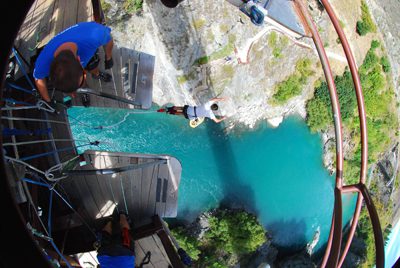

Recently I had a chance to talk to several entrepreneurs, including many who started new successful businesses and other second generation leaders, who have built and expanded established businesses. Enterprise typically starts with the highest degree of risk and as it grows and matures, the level of risk declines. In the recent past during the recession years, we produced more innovators and entrepreneurs who needed to take risks to survive. Both city and state governments have developed several programs to germinate new businesses and sustain entrepreneurship. In Michigan and the Detroit area, these efforts include Motor City Match, Detroit Venture Partners, Techstars Mobility and others that provide financial resources and incubators to develop and grow entrepreneurial vision.
On the other hand, when a business becomes successful and enters a comfort zone, leaders can choose to limit risk and keep the status quo. Often asset or capital preservation takes precedent over risk taking and as a result the entrepreneur can lose the entrepreneurial spirit or drive. One of the ways to continue the entrepreneurial drive is to have a realistic assessment of the enterprise risks and manage them effectively.
In 2009 when I was in New Zealand, I bungee jumped from the famous Kawarau Bridge. This is the first place the opportunity for common men to perform this daredevil act was offered. To me the thrill of diving down and touching the river water 165 feet below was exciting and uplifting. On the other hand, my wife, who accompanied me, thought it was way too risky. This is analogous to the way different entrepreneurs can approach decision making. Some would weigh the risk of getting hurt and feel it was too great. Whereas others would focus on the upside of the risk and thought it worth the greater reward of getting the adrenaline rush! The opportunity to have great rewards when taking risks is perhaps one of the reasons why people like Warren Buffett, multi-billionaire chairman of Berkshire Hathaway, stay engaged in business! Obviously the degree of risks and the value of associated rewards vary for different people and situations. However businesses must manage risks daily to be sustainable.
Enterprise Risk Management (ERM) is the process of planning, organizing, leading and controlling the activities of an organization in order to minimize the effects of risk on an organization’s capital and earnings, or even their very existence. It is a multi-dimensional process compared to the liability insurance policy of the past. Extreme examples of failure to manage risks include Enron, Arthur Andersen, WorldCom and Lehman Brothers in 2008, which triggered a global financial crisis. In our own backyard recent past examples include GM, Chrysler and the city of Detroit. Thankfully techniques are available for businesses to manage the enterprise risks for both a budding entrepreneur and a thriving corporation. Risks must be assessed, measured and effectively managed to make your business sustainable. Some of the components of these risks are:
Financial: Financial assets include cash, receivables, investments and equity. Financial goals must be set for cash flow and line of credit, keeping account receivables under 60 to 90 days, budgeting investment levels and equity preservation. An annual budget developed with the enterprise mission and goals in mind and monthly tracking provide good risk management tools.
 Governance: All enterprises, be it a single owner or family business or even a medium to large corporation managed by a board of directors, need an organization structure that can monitor the goals and keep the enterprise on its mission, while at the same time continuing to nurture new ideas. Leadership that empowers employees and encourages them to strategically think is very important.
Governance: All enterprises, be it a single owner or family business or even a medium to large corporation managed by a board of directors, need an organization structure that can monitor the goals and keep the enterprise on its mission, while at the same time continuing to nurture new ideas. Leadership that empowers employees and encourages them to strategically think is very important.
Legal: Continually assess if the enterprise is too conservative and risk averse or open to new ventures? Accordingly, the enterprise must put in place fair contracts and agreements that include limitation of liability. A good liability insurance policy is important, however the policy alone is no substitution for ERM.
Operational: Develop an organizational structure that has a clear line of responsibility and accountability; at the same time, one that is flat enough to empower its people to take risks. Human resources must be matched to the enterprise culture that maintains the “right people on the bus in right places.” Effective organizations typically maintain their facilities in a good working order and employ lean management practices; they keep their technology at cutting edge. Organizations must invest in employee training, and keep safety and security a top priority.
Customer Relationship Management: Enterprise embodies a culture that often asks “who are we working for?” and prioritizes customer satisfaction. Typically, large companies send automated customer surveys after each sale. However smaller businesses can call or personally talk to customers to thank them for their business and ask how they can do better? A happy customer is normally a good sign of lower enterprise risk!
Brand Management: Good understanding of risks to an enterprise brand is critical to sustain its success. Is your company known for quality products and great service or low price and value? We think of Ritz Carlton for best service, Google or Amazon for best products, Wal-Mart for low prices and Costco for value, for example. Risks are great when the brand fails to deliver customer expectations. There are ways to mitigate risks associated with brands; examples include transparency and honesty that saved Tylenol in its crisis years ago, and the car ignition switch recalls that GM managed recently.
Businesses and corporations that effectively manage risks and constantly stay aware of their willingness to take risks generally reap the most rewards. Steve Jobs, who was a perfectionist, idealist and inventor, started Apple Computers from his father’s garage. Today Apple reigns supreme when it comes to making money. It is the world’s largest company by market capitalization and most profitable as well. It is a prime example of entrepreneurial risk taking that ultimately led to enormous rewards!
Size of business will generally dictate the ERM process that can be effectively deployed. The enterprise that understands and manages risks well will be sustainable and continue to accomplish its mission successfully.







